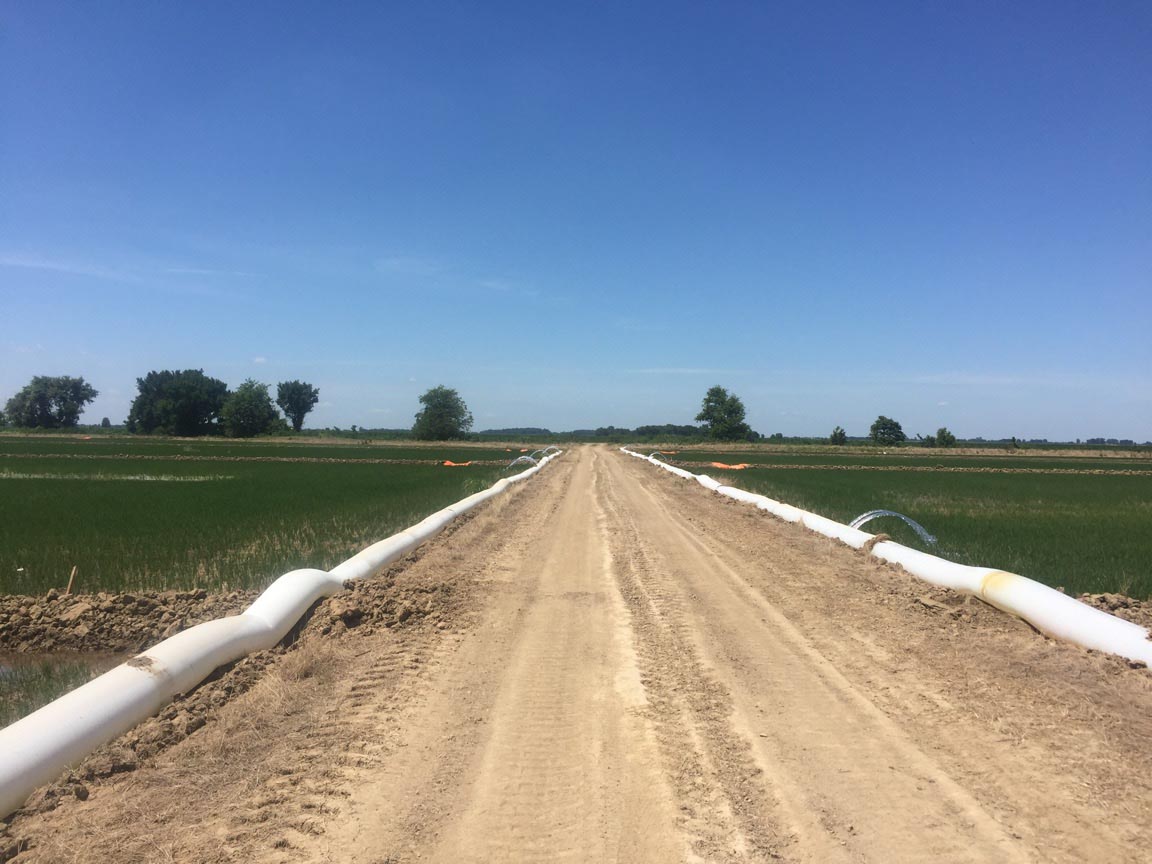 AWD in action
AWD in action
Jul 11, 2016
CLEVELAND, MS— Growers in the area were presumably celebrating slightly more than the average American over the Fourth of July weekend due to a much-needed rain following a 25 day long dry spell. Nat McKnight, a grower and member of the 2015-2017 Rice Leadership Development Class, reports that his rice, corn, and soybean crops are thriving, especially after the recent wet weather.
According to McKnight, 3-5 percent of the rice is already headed in Mississippi and within two weeks roughly 60 percent of the crop will be headed.
With 50-60 percent of the crop past mid-season, growers are currently focusing on irrigating the fields. During this stage in the rice growing cycle, McKnight employs intermediate flooding, a conservation tactic that distributes water to the crop strategically in measured spurts over the course of several days.
McKnight reports that the crop looks very good this year and most Mississippi growers will harvest their rice starting the last week of August. However, the main challenge comes after the harvest.
Last year, 149,000 acres of rice were grown in Mississippi, and the projected acreage for this year is 200,000. The other five rice-growing states are experiencing the same increase in rice acreage this year. A concern voiced by many growers including McKnight is that this year’s high acreage could result in low prices due to market limitations.
While McKnight expresses optimism at the prospect of breaking into the Cuban market and gaining a steadier hold in Iraq, he also sees great potential domestically.
“I would like to see us eventually increase the annual average consumption of rice in the United States another 5-10 pounds per person,” said McKnight. (Americans currently eat a little more than 26 pounds of rice per person each year.) “Even in Bolivar County, where we are the largest rice-producing county in the state, some local restaurants do not have rice on the menu. We have to keep pushing the message out there that rice is healthy, affordable, and can be used in so many different ways for breakfast, lunch, and dinner. Customers should be looking for U.S. rice on menus. Of course, our exports are important, but I see a lot of promise right here at home as well.”